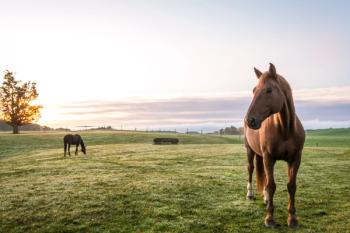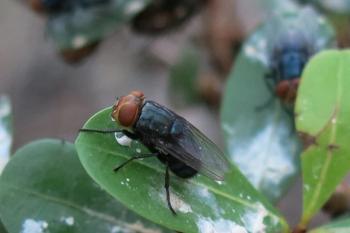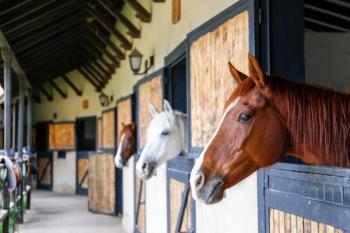
Floods threaten livestock food supply
Devastating floods in several Midwest states left most farm animals unscathed, but food shortages and disease still loom as major concerns for farmers and veterinarians in coming months and years.
Devastating floods in several Midwest states left most farm animals unscathed, but food shortages and disease still loom as major concerns for farmers and veterinarians in coming months and years.
"Frankly the biggest problem right now is feeding these animals," says Heather Case, American Veterinary Medical Association coordinator of emergency preparedness and response. "With the crop losses because of the flood, oil prices and the price of feed going through the roof, many livestock operations can't feed them."
At any given time, there are 16 million to 17 million hogs in Iowa, the largest hog-producing state.
"Fortunately, the flooding, while disastrous for some as far as the number of animals lost, it's not nearly as bad as it could have been," says Ronald Birkenholz, spokesman for the Iowa Pork Board. "Most producers were very proactive."
Dr. Thomas Burkgren, executive director of the American Association of Swine Veterinarians, says his group has not heard of any major issues with hogs being killed or abandoned as a result of the flooding, adding that most farmers in the affected areas were able to mobilize and remove their hogs before the levees burst.
Still, there are concerns about disease in the once-flooded areas. "We're asking producers to have a heightened awareness and encouraging them to do everything they can to keep disease out of the herd," Birkenholz says.
Dr. Gatz Riddell, executive vice-president of the American Association of Bovine Practitioners, says cattle producers also fared well during the floods.
The big issue for large animals and their owners will be the supply and price of feed next year, officials say. Already at record levels, feed and hay costs are expected to climb even higher next year as a result of the flooding.
The price of feed before the floods was $7 and higher. That could climb to $11 to $15 by next year – if there even is any feed available.
"We're in the process of trying to reduce the size of the herd because of extremely high feed costs," says Birkenholz. "There is plenty of corn right now, but the problem is next year."
Damages across the Midwest are expected to surpass the $21 billion in losses tallied by the 1993 floods.
While corn prices hit an all-time high, many other important crops also were devastated, especially wheat in Missouri and Nebraska and soybeans in Indiana and Kentucky.
And fields probably will remain waterlogged well into August. Some will take months or even years to recover.
Dr. Christine Petersen, associate professor at Iowa State University College of Veterinary Medicine, says it's a national issue that will reverberate back to consumers in terms of food costs and even back to the college, since a lot of the people who support the college are local.
"People who support our college, our programs, are suffering," she says. "We need to be aware of that and be responsive. We're looking at ways it is going to impact us down the road."
Newsletter
From exam room tips to practice management insights, get trusted veterinary news delivered straight to your inbox—subscribe to dvm360.






